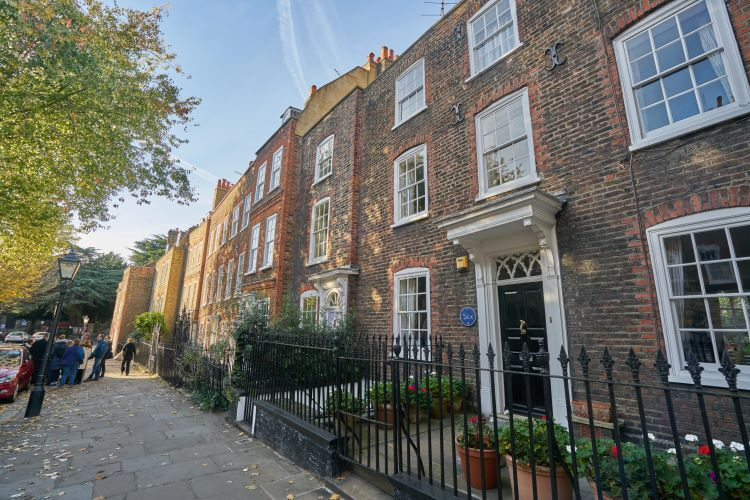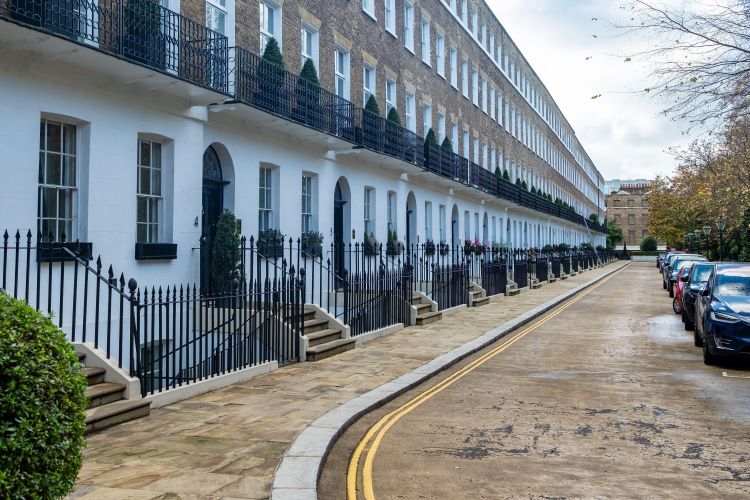Keeping it all in proportion – why we need more Georgian houses
6 min read
Georgian architecture is beloved by the British public, says Tom Scotson. So could it be the answer to our housing crisis – and keep the Nimbys at bay?
Once again, Georgian houses are in vogue.
Polling, commissioned by Anglican Home Improvements, found they were currently the most desired property style from any epoch among the British public.
That’s despite the fact they have a built-in price premium which reflects this growing interest; Georgian homes are almost 50 per cent more expensive than homes of other architectural styles on the market.
Politicians, as ever, have tried to ride this wave of enthusiasm to show they are in tune with the public’s tastes. Labour leader Keir Starmer, for example, has promised to give developers special permissions to build on brownfield sites if they were building “gentle urban developments” based on Georgian-style architecture.
Former housing secretary Brandon Lewis, Conservative MP for Great Yarmouth, confessed his "love" for the style of architecture to The House magazine – despite having lots of Victorian buildings in his own constituency (which he admits he is also fond of).
So, what are Georgian homes, do they fit the needs of modern Britain – and is a new generation of them even possible?
Georgian properties were built between the birth of George I in 1714 and the death of George IV 1830.
Yet they are more than a time capsule: their enduring beauty and popularity is a testament to that.
The style was influenced by the design codes of Ancient Rome and Greece. Buildings between the two periods shared symmetrical proportions and restrained exteriors with little surface ornamentation.
Georgian style buildings are smaller with distinctive square windows, high ceilings and light colours. Most buildings from the period were not built with their own front garden and are located near green spaces and parks.
British masterpieces such as Bath Circus, Wilberforce House and Chiswick House are enduring symbols from the era.
Alongside them is No 10 Downing Street. Built in 1732, it is perhaps one of the most modest buildings for a democratic leader in the Western world. Yet there are few more iconic prime ministerial homes than the Georgian masterpiece with its distinctive black door, small porticos and the transom which adorns the terraced house.
There are many clear advantages to why a revival in building Georgian-style homes would work for Britain.
Firstly, the public like the look of them. This is crucial for home being built in the first place; many housing developments find it difficult to get off the ground because they are so distained by local residents for being “ugly” or out of step with local infrastructure.
Research from Shelter found new housing in Britain was the least popular in any G8 nation – despite it being a top infrastructure priority. The country is in dire need of more housing. The Centre for Cities, a think tank, found the UK has a shortfall of 4.3 million homes.

Meanwhile between May 2010 and January 2023, the average house price has increased from £170,846 to £289,818, according to the Office for National Statistics (ONS).
A home in the capital, meanwhile, has an average price of £516,000 in October 2023.
Finding a way to increase the supply of homes is a moral and economic necessity. By persuading residents new developments will be "beautiful", we might alleviate the housing crisis in part while also easing local people's concerns that a monolith will pop up in their back garden.
Alongside aesthetics, there are other reasons Georgian homes can provide a useful template for modern urban housing.
Standing three or four storeys tall, this style of housing could be key to fitting millions of people in the UK’s densest pockets – especially in cities like London, Manchester and Leeds. Compared to modern semi-detached and detached homes, they take up little land, and are perfect for new renters, couples and young families.
Ant Breach, associate director at Centre for Cities, told The House magazine there is not enough mid-rise housing in urban areas where people want to live.
Using less land is likely to prove a major factor in convincing the public to go for new homes being built in their area; housebuilding spooks people who are concerned new developments will concrete over communities and take up green spaces.
It is a fear Nimby campaigners – and even the Prime Minister in a recent op-ed in The Times – have used to warn against building more homes on green land.
Public polling seems to demonstrate this. Research by JL Partners commissioned by the Adam Smith Institute found that more than 50 per cent of people wanted to see more homes built locally. And yet, this figure dropped to 25 per cent if the houses were to be built on green belt land.
However, although Georgian homes are practical and widely regarded as beautiful, decreeing that they be built would undoubtedly have its downsides.
For one, a demand from central government to build one specific style of architecture poses some risk. Such top-down thinking could squeeze the lifeblood out of new ideas and prevent new styles of building from emerging.

Imitating the past could deprive us of new homes which could prove equally beautiful – and popular.
Yet, above all, the main obstacle to building new Georgian houses is the current planning system.
The system by its very design is subjective and uncertain. There are few objective requirements or rules developers can meet to guarantee their blueprints for housing developments will be given the green light.
Each planning application is judged on a case-by-case basis, and is susceptible to being struck down by Nimby residents. In some cases, housing companies can buy plots of land but not get planning permission to build on it.If Britain is to reap the rewards of a new generation of Georgian homes, it will have to reimagine the planning system. But this will require expending enormous amounts of political capital.
Despite promises to overhaul the planning system – and “backing the builders not the blockers” – Keir Starmer will have to be prepared to upset many of his new MPs and voters if elected prime minister at the next election. Starmer and his shadow levelling-up secretary Angela Rayner have continuously doubled down on their plans.
Yet Starmer’s own shadow housing secretary Matthew Pennycook struck down the idea of “kneejerk planning deregulation” on X, formerly known as Twitter, and has criticised the Yimby vs Nimby debate in the past.
Georgian homes may be in vogue – and popular in theory – but is the next government willing to be unfashionable to get its hands dirty, and build the new generation of Georgian homes Britain needs?
